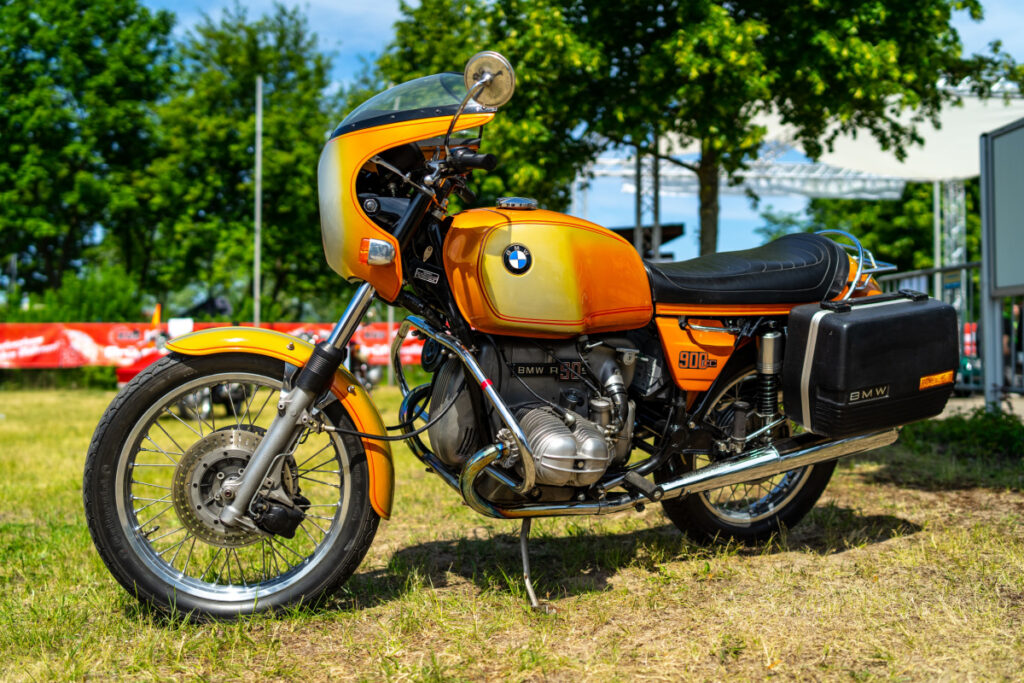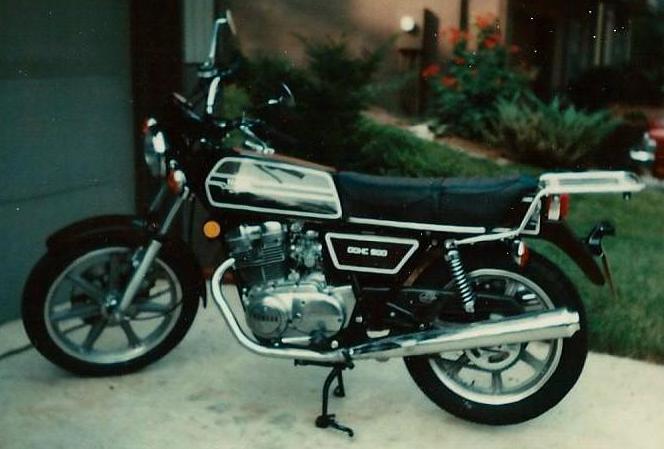The 1970s were a transformative decade for motorcycles, filled with innovation and style. However, not every bike from this era captured the public’s imagination. In this article, we dive into the 20 least popular motorcycles of the 1970s. Despite their lack of fame, these bikes offer a unique glimpse into the diverse and sometimes quirky world of 70s motorcycle design. Let’s take a closer look at these overlooked machines and the stories behind them.
Contents
Kawasaki H2 Mach IV

The Kawasaki H2 Mach IV was a powerful and aggressive bike, boasting a 750cc two-stroke triple engine. Despite its impressive speed and power, it was notorious for its unpredictable handling and tendency to lift the front wheel, making it less popular among everyday riders seeking reliability and ease of control.
Suzuki RE5 Rotary

The Suzuki RE5 Rotary featured a unique rotary engine, which was innovative but complex and difficult to maintain. Its unusual engine layout and high maintenance costs deterred many riders, leading to its limited popularity despite its smooth performance.
Honda CB350F

The Honda CB350F was overshadowed by its larger siblings, the CB500 and CB750. Despite its innovative four-cylinder engine, the 350cc displacement struggled to deliver the expected performance, leading to its lack of popularity compared to other models in Honda’s lineup.
Norton Commando 850

The Norton Commando 850, while admired for its design and performance, faced stiff competition from Japanese manufacturers. Its reliability issues, including frequent oil leaks and electrical problems, made it less appealing to riders seeking dependable motorcycles.
Ducati 860 GT

The Ducati 860 GT was criticized for its unconventional styling and uncomfortable riding position. Despite its 860cc V-twin engine, the bike’s aesthetics and ergonomics did not resonate with the market, leading to its limited success.
BMW R90S

The BMW R90S was a high-performance bike with a 900cc engine, but its high price tag and conservative styling limited its appeal. While it gained a loyal following among enthusiasts, it was not as popular as other more affordable and stylish options available at the time.
Triumph Trident T160

The Triumph Trident T160 featured a 750cc triple engine and modern updates, but it was introduced too late to compete effectively with Japanese bikes. Its high price and the company’s financial struggles further hindered its popularity, despite its technical merits.
Moto Guzzi V7 Sport

The Moto Guzzi V7 Sport was praised for its handling and unique V-twin engine, but it struggled to gain widespread popularity due to its niche appeal and high cost. Its distinctive design and loyal fanbase could not overcome its limited market presence.
Benelli 750 Sei

The Benelli 750 Sei was the first production six-cylinder motorcycle, featuring a 747cc engine. Despite its technological innovation, it was plagued by reliability issues and high maintenance costs, making it less desirable compared to more reliable competitors.
Kawasaki KZ400

The Kawasaki KZ400 was an entry-level bike with a 398cc engine, but it was overshadowed by more powerful and better-equipped models. Its modest performance and basic features made it less appealing to riders seeking a more exciting and feature-rich motorcycle.
Suzuki GT550

The Suzuki GT550, a two-stroke triple, offered decent performance but was hampered by its high fuel consumption and emissions. Its relatively high running costs and the advent of more efficient four-stroke engines contributed to its lack of popularity.
Yamaha XS500

The Yamaha XS500 featured a 500cc parallel-twin engine, but it was plagued by reliability issues, including cam chain tensioner problems and oil leaks. Its performance did not live up to expectations, leading to its limited success in the market.
Harley-Davidson Sportster XLCH

The Harley-Davidson Sportster XLCH was a high-performance variant of the Sportster, but its kick-start-only design and heavy weight made it less user-friendly. Its niche appeal and the rise of electric-start models contributed to its lower popularity.
Honda CB500T

The Honda CB500T was an evolution of the CB450, featuring a 500cc twin engine. However, its performance was lackluster, and it faced stiff competition from other Honda models. Its dated design and moderate power output made it less attractive to buyers.
BMW R75/7

The BMW R75/7 offered solid performance with its 750cc engine, but its conservative styling and high price limited its appeal. Competing against more modern and affordable bikes, it struggled to capture a significant market share.
Triumph Bonneville T140V

The Triumph Bonneville T140V was an updated version of the iconic Bonneville, featuring a 750cc engine. However, quality control issues and competition from Japanese manufacturers hindered its success, making it less popular than its predecessors.
Moto Guzzi 850 Le Mans

The Moto Guzzi 850 Le Mans was a sporty model with an 844cc V-twin engine, but its high price and niche appeal limited its market reach. While admired for its performance, it did not achieve widespread popularity.
Benelli 500 Quattro

The Benelli 500 Quattro featured a 500cc four-cylinder engine, but its complex design and reliability issues made it less attractive to buyers. Its high maintenance requirements and lack of dealer support further reduced its popularity.
Laverda 750GT

The Laverda 750GT offered strong performance with its 744cc parallel-twin engine, but its heavy weight and high price deterred many riders. Its limited comfort and usability made it less popular among those seeking a more practical motorcycle.
Kawasaki Z1-R

The Kawasaki Z1-R was a stylish and powerful bike with a 903cc engine, but its high price and aggressive riding position limited its appeal. Despite its impressive specs, it did not achieve the same popularity as other models in the Z1 series.
This article originally appeared in MyCarMakesNoise.
More from MyCarMakesNoise
13 Durable SUVs That Are Known For Their Longevity

Selecting an SUV that combines reliability with enduring build quality can be a smart investment for drivers who value long-term performance. These models stand out for their proven track records in maintaining robust functionality and comfort over extensive periods, making them ideal choices for those planning to keep their vehicle for many years. Read More.
13 Rare American Sports Cars You’ll Likely Never See on the Road

American sports cars are renowned for their bold designs, powerful engines, and the indelible mark they leave on the automotive world. From iconic muscle cars of the 1960s to modern-day engineering marvels, these vehicles symbolize freedom, innovation, and raw power. Read More.
10 Fascinating Facts About High-Speed Bullet Trains

High-speed bullet trains have transformed the way we think about travel, offering an efficient, comfortable, and sustainable alternative to traditional transportation methods. These marvels of modern engineering have significantly shortened travel times between major cities, making long-distance commuting more feasible and boosting economic productivity. Read More.














